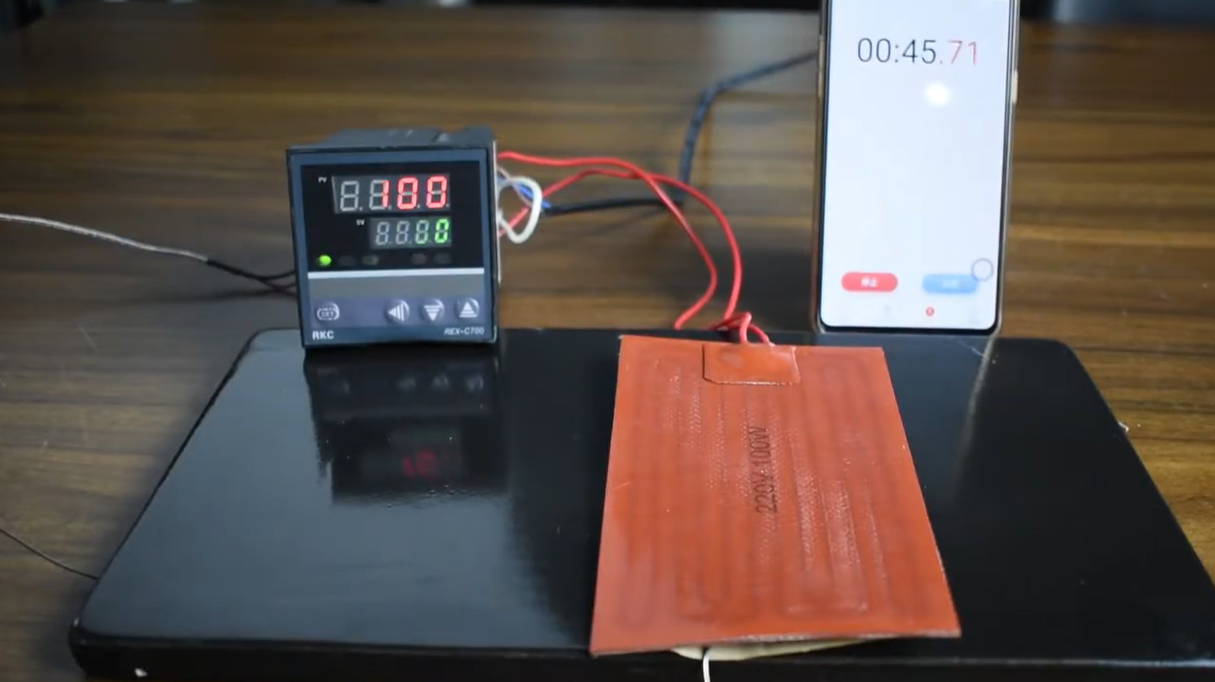
How Etched Circuits Improve Silicone Heater Performance?

What makes silicone heaters the ideal solution for winter battery efficiency?

Why a Fiberglass Silicone Heater Could Be Your Best Choice?

How Polyimide Heaters Keep Lenses Crystal Clear in Extreme Cold

Thermal Fuses: Small but Mighty Protectors of Your Electronics
Heaters play a crucial role in industrial applications and daily life. Among them, silicone rubber heaters are widely used due to their flexibility, efficiency, and stability. One critical performance metric for heaters is their warm-up time, which depends on factors like the characteristics of the heated object, power, and environmental conditions.
This blog will explore how these factors influence a heater's warm-up time, supported by an experimental case study using a silicone rubber heater.
A heater works by converting electrical energy into thermal energy, which is then transferred to the target object via conduction, convection, or radiation. For instance, a silicone rubber heater's flexible design and efficient heat transfer make it ideal for applications requiring rapid and uniform heating.
The typical warm-up curve shows a sharp temperature rise initially, followed by stabilization once the heater reaches the desired temperature.
The heater's power, defined by the formula P = V × I (voltage × current), directly determines the rate of heat generation. A higher power output leads to faster heating.
For example, a 220V, 100W silicone rubber heater can heat to 100°C in just 45 seconds under specific conditions, demonstrating the impact of sufficient power on heating speed.
Heat Capacity: The heat capacity of an object, determined by its material and mass, plays a significant role in warm-up time. The formula Q = mcΔT explains how the object's mass (m), specific heat capacity (c), and temperature difference (ΔT) affect the energy required for heating.
Example: Metals with high thermal conductivity heat faster than materials like plastic.
Surface Area and Contact Efficiency:
Larger contact areas improve heat transfer.
Using thermal conductive adhesives can enhance contact and reduce heat loss.
Initial and Environmental Temperatures:
A colder initial or ambient temperature increases the energy required for heating, resulting in a longer warm-up time.
External factors, such as airflow and ambient temperature, significantly impact warm-up time. In a low-temperature or high-wind environment, heat loss increases, which slows down heating.
Heater materials and structural design influence efficiency:
· High thermal conductivity materials ensure faster heat transfer.
· Even heat distribution, such as that achieved by silicone rubber heaters, improves overall performance.
· Use a heater with higher power and optimized watt density.
· Select materials and heater designs tailored to the target object's properties.
· Improve thermal coupling by using conductive adhesives or increasing contact pressure.
· Minimize environmental heat loss with insulation or enclosures.
Test Setup:
Heater: Silicone rubber heater, 220V, 100W.
Conditions: Room temperature (25°C), no additional insulation or airflow.
Results: The heater warmed up to 100°C in just 45 seconds, showcasing its efficiency under controlled conditions.
Insights: The high watt density and efficient heat transfer design of the silicone rubber heater contributed significantly to the fast warm-up time.

The future of heater technology lies in improving efficiency, reducing energy consumption, and incorporating intelligent control systems. Silicone rubber heaters exemplify how innovation in materials and design can address various challenges, from automotive seat heating to industrial pipeline temperature control.
· Battery heating for electric vehicles in cold climates.
· Medical device temperature regulation.
· Energy-efficient heating solutions for renewable energy systems.
Warm-up time is a crucial performance metric for heaters, influenced by power, the heated object's characteristics, and environmental conditions. By optimizing these factors, heaters can deliver rapid, uniform, and energy-efficient heating.
The 220V, 100W silicone rubber heater demonstrated its capabilities in a warm-up test, highlighting the importance of tailored solutions for specific applications. As technology advances, heaters like this will continue to evolve, providing reliable thermal solutions across various industries.

We offer a wide variety of high-efficiency heaters and heating element.Such as polyimide/kapton heaters,silicone rubber heaters,PET transparent heaters, thick film heaters,PTC heaters, mica heaters,epoxy resin heaters and graphene heating film.